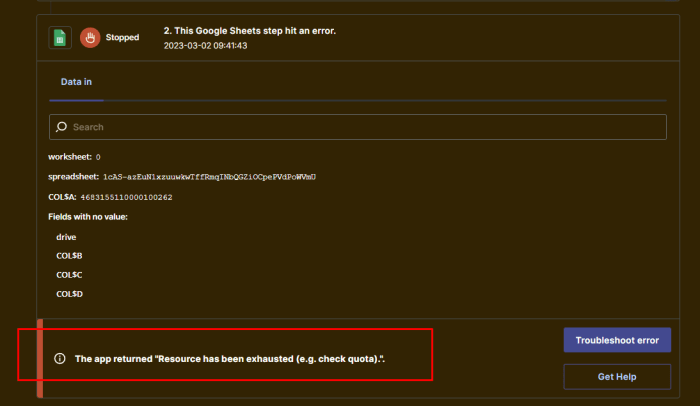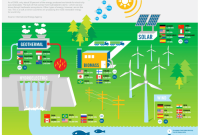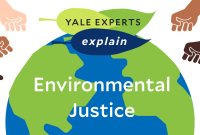Dive into the fascinating world of water pollution control laws, where we explore the evolution of regulations, key concepts, and the role of technology in safeguarding our precious water resources. This journey will help you understand the intricate web of laws that govern water pollution control, ensuring a sustainable future for generations to come.
Table of Contents
ToggleHistorical Overview of Water Pollution Control Laws
The history of water pollution control laws in the United States can be traced back to the late 19th century when the Industrial Revolution led to widespread water pollution. In 1899, the Rivers and Harbors Act was passed, prohibiting the discharge of refuse into navigable waters. This law was followed by the Clean Water Act of 1972, which established a comprehensive framework for regulating water pollution.
Water Pollution Control Laws aim to safeguard our water bodies from harmful contaminants. These laws are essential for protecting public health and preserving aquatic ecosystems. By implementing strict regulations and penalties, these laws ensure that industries and individuals take responsibility for preventing water pollution, safeguarding our precious natural resources for future generations.
The Clean Water Act has been amended several times over the years, most notably in 1977 and 1987. These amendments have strengthened the law’s enforcement provisions and expanded its scope to include groundwater pollution.
Government Agencies
The Environmental Protection Agency (EPA) is the primary federal agency responsible for enforcing the Clean Water Act. The EPA sets water quality standards, issues permits for wastewater discharges, and takes enforcement actions against violators.
State and local governments also play a role in water pollution control. States have the authority to adopt their own water quality standards, which may be more stringent than federal standards. Local governments can issue permits for wastewater discharges and take enforcement actions against violators.
Key Concepts and Definitions
Water pollution control laws are based on fundamental concepts and definitions that establish the framework for regulating and managing water pollution. These concepts and definitions provide a common understanding of the scope and objectives of water pollution control laws.
One of the key concepts is “water pollution,” which refers to the contamination of water bodies with substances that can harm human health or the environment. Pollutants can come from various sources, including industrial discharges, agricultural runoff, sewage treatment plants, and stormwater runoff.
Types of Water Pollutants
Common water pollutants include:
- Toxic chemicals: These can cause serious health problems, such as cancer, birth defects, and reproductive disorders. They can enter water bodies through industrial discharges, spills, and leaks.
- Pathogens: These are disease-causing microorganisms found in sewage, animal waste, and stormwater runoff. They can cause illnesses such as gastrointestinal diseases, skin infections, and respiratory infections.
- Nutrients: Substances like nitrogen and phosphorus can cause algal blooms and eutrophication, leading to oxygen depletion and fish kills.
- Sediment: Soil or other particles can clog waterways, smother aquatic life, and carry pollutants into water bodies.
- Thermal pollution: The release of heated water into water bodies can harm aquatic life and disrupt ecosystems.
Regulatory Framework
The regulatory framework for water pollution control is a complex and ever-evolving system of laws, regulations, and policies designed to protect water resources from pollution. This framework is administered by various levels of government, each with its own roles and responsibilities.
Federal Government
The federal government plays a significant role in water pollution control through the Clean Water Act (CWA). The CWA establishes national water quality standards and sets limits on the discharge of pollutants into navigable waters. The EPA is the primary federal agency responsible for enforcing the CWA.
State Governments
State governments also have a significant role in water pollution control. States can adopt their own water quality standards that are more stringent than federal standards. States also have the authority to issue permits to dischargers of pollutants and to enforce those permits.
Local Governments
Local governments can also play a role in water pollution control. They can adopt ordinances that regulate the discharge of pollutants into local waterways and provide funding for water pollution control projects.
Enforcement Mechanisms and Penalties
The regulatory framework for water pollution control includes a variety of enforcement mechanisms and penalties. These can include:
- Civil penalties
- Criminal penalties
- Administrative penalties
- Injunctions
- License suspensions or revocations
The type of enforcement mechanism or penalty used depends on the severity of the violation and the history of the violator.
Water Quality Standards
Water quality standards are crucial for protecting human health and aquatic ecosystems. They establish acceptable levels of various pollutants in water bodies to ensure their safety and usability.
Setting water quality standards involves extensive scientific research and public input. Government agencies evaluate the latest scientific findings on the effects of pollutants on human health and aquatic life. They consider factors such as toxicity, bioaccumulation, and potential health risks.
Designated Uses
Water quality standards are established for different designated uses of water bodies, such as:
- Drinking water supply
- Recreational activities (swimming, fishing)
- Agricultural irrigation
- Industrial use
- Aquatic life protection
Each designated use has specific water quality criteria that must be met to ensure its safety and suitability for that purpose.
Enforcement
Enforcing water quality standards is essential to ensure compliance and protect water bodies. Government agencies conduct regular monitoring to assess water quality and identify violations. Penalties and enforcement actions may be imposed on entities that discharge pollutants beyond the established limits.
Pollution Control Technologies
To combat water pollution, various technologies have been developed and implemented. These technologies encompass a wide range of processes, each tailored to address specific pollutants and water quality issues. Understanding the principles and applications of these technologies is crucial for effective water pollution control.
Physical Treatment Methods
Physical treatment methods involve the removal of pollutants through physical processes such as filtration, sedimentation, and flotation. These methods are commonly used as preliminary or primary treatment steps to remove large particles, suspended solids, and other physical contaminants.
- Filtration: Water is passed through a porous medium, such as sand or activated carbon, to remove suspended solids, bacteria, and other particles.
- Sedimentation: Water is allowed to settle in a basin, allowing suspended solids to settle out by gravity.
- Flotation: Air or gas is introduced into water to create bubbles that attach to and float pollutants to the surface, where they can be skimmed off.
Chemical Treatment Methods
Chemical treatment methods utilize chemical reactions to remove or neutralize pollutants. These methods are often employed to treat specific contaminants, such as heavy metals, organic compounds, and nutrients.
- Coagulation and Flocculation: Chemicals are added to water to destabilize and agglomerate suspended particles, making them easier to remove by sedimentation.
- Chemical Precipitation: Chemicals are added to water to form insoluble precipitates with pollutants, which are then removed by sedimentation.
- Neutralization: Chemicals are added to water to adjust its pH, neutralizing acidic or alkaline pollutants.
Biological Treatment Methods
Biological treatment methods harness the metabolic activities of microorganisms to break down and remove pollutants. These methods are particularly effective for treating organic pollutants and nutrients.
- Activated Sludge Process: Wastewater is mixed with a culture of microorganisms in an aeration tank, where the microorganisms consume and break down organic pollutants.
- Trickling Filters: Wastewater is sprayed over a bed of rocks or plastic media covered with a biofilm of microorganisms that break down pollutants.
- Constructed Wetlands: Wastewater is passed through a constructed wetland, where plants and microorganisms remove pollutants through uptake, filtration, and decomposition.
Advanced Treatment Methods
Advanced treatment methods are employed to remove specific pollutants or achieve higher levels of water quality. These methods often involve specialized technologies and processes.
- Membrane Filtration: Water is passed through a semipermeable membrane to remove pollutants based on size and charge.
- Ion Exchange: Water is passed through a resin that exchanges ions with pollutants, removing them from the water.
- Ozonation: Ozone is added to water to oxidize and break down organic pollutants.
Best Management Practices
Best management practices (BMPs) are specific actions or practices designed to reduce water pollution from various sources. They are typically implemented to address specific water quality concerns and are tailored to the unique characteristics of a particular industry or activity.
BMPs aim to minimize the discharge of pollutants into water bodies, protect aquatic ecosystems, and ensure the overall health of water resources.
Types of BMPs
BMPs vary widely depending on the industry, activity, and specific water quality concerns being addressed. Some common types of BMPs include:
- Erosion and sediment control measures, such as mulching, revegetation, and sediment traps, to prevent soil erosion and sediment runoff.
- Nutrient management practices, such as controlled fertilizer application and cover cropping, to reduce nutrient pollution from agricultural activities.
- Stormwater management practices, such as rain gardens, bioswales, and permeable pavements, to capture and treat stormwater runoff.
- Wastewater treatment technologies, such as activated sludge processes and membrane filtration, to remove pollutants from wastewater before it is discharged into water bodies.
- Pollution prevention measures, such as spill prevention and control plans, to minimize the risk of accidental spills and releases.
Benefits and Challenges of Implementing BMPs
Implementing BMPs can provide numerous benefits, including:
- Reduced water pollution and improved water quality.
- Protection of aquatic ecosystems and biodiversity.
- Enhanced recreational opportunities and aesthetic value of water bodies.
- Compliance with regulatory requirements and reduced risk of fines or penalties.
However, implementing BMPs can also pose challenges, such as:
- Cost and resource requirements.
- Technical complexity and maintenance needs.
- Potential conflicts with other land use or economic activities.
- Lack of awareness or understanding among stakeholders.
Economic and Social Impacts
Water pollution control laws have significant economic and social impacts. These laws impose costs on businesses and individuals, but they also provide benefits by protecting human health and the environment.




